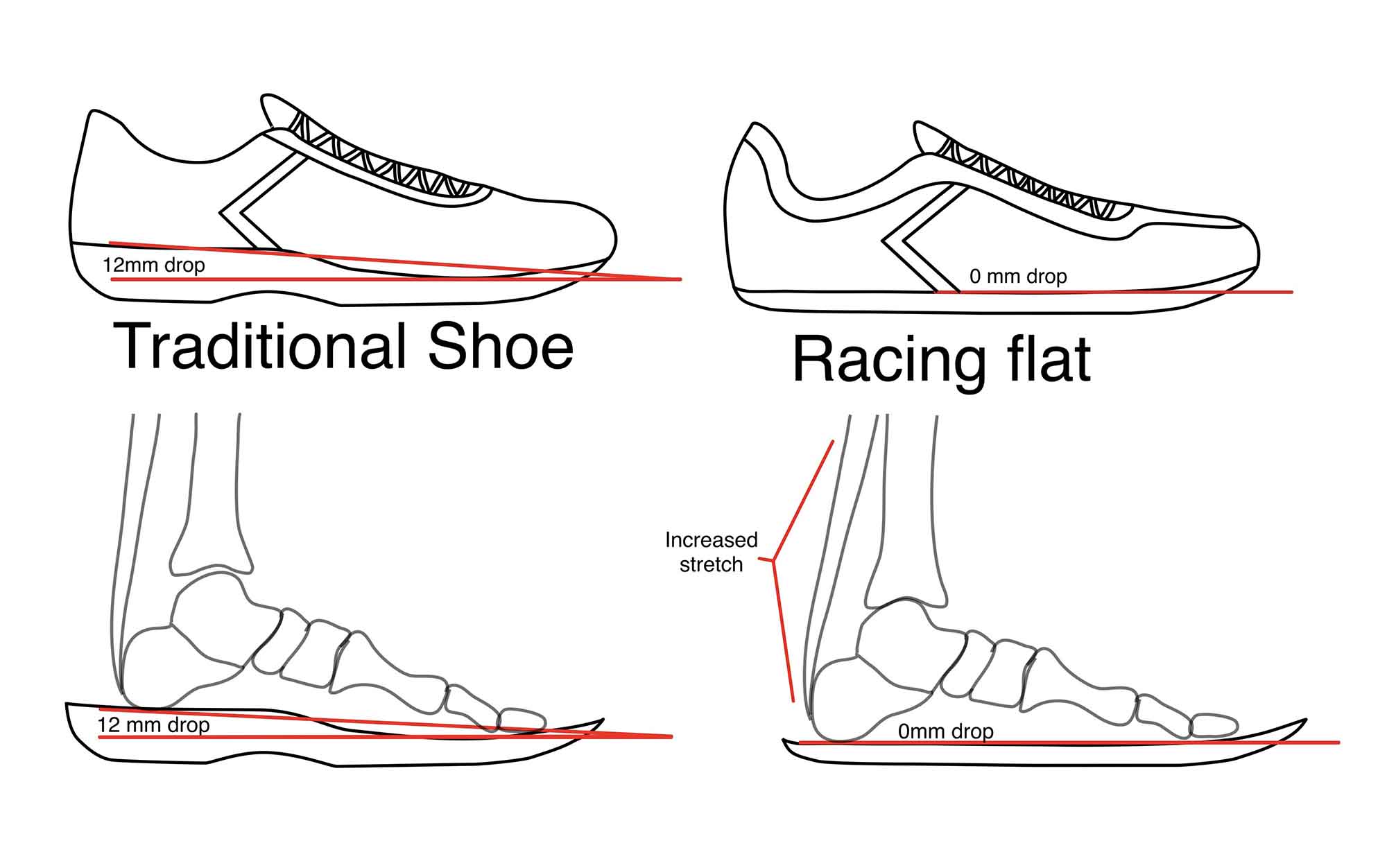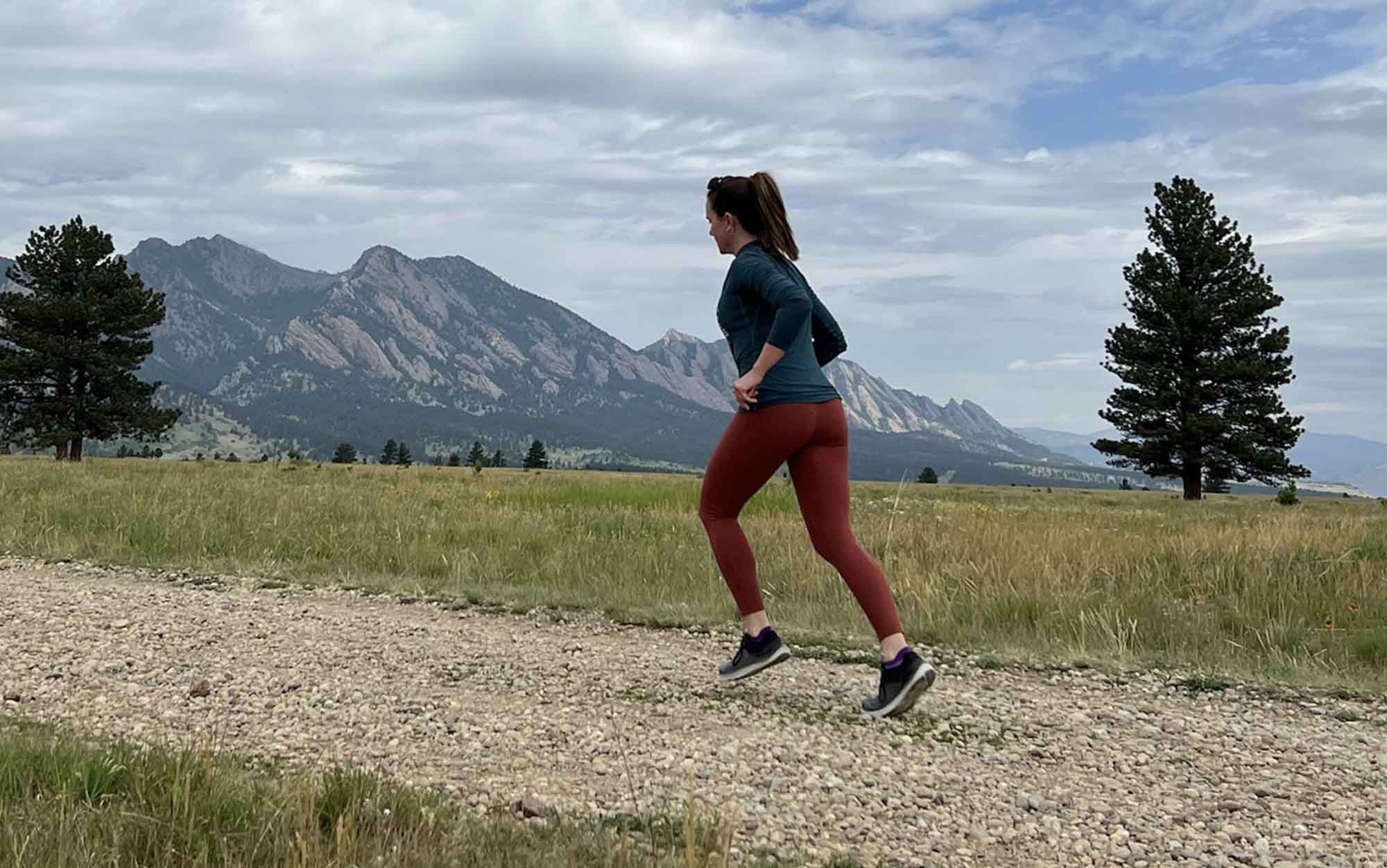What Is Heel Drop? Here’s What You Need to Know When Buying Your Next Pair of Hiking or Running Shoes
We may earn revenue from the products available on this page and participate in affiliate programs. Learn More ›
“Heel drop” might be a commonplace term in the running and hiking shoe world, but there is plenty of misunderstanding as to what it is and why it’s important. Put simply, heel drop refers specifically to the height differential between the cushion at the heel and the cushion at the forefoot. If a shoe has 30mm of cushion at the heel but only 22mm of cushion at the toes, it would have an 8mm heel drop.

Modifyphysio
It wasn’t that long ago that virtually all running shoes sported a half an inch or more of extra cushioning at the heel. But then in the aughts barefoot and natural movement proponents introduced shoes that were completely level across the sole. Altra co-founder Golden Harper termed these “zero-drop shoes” and awareness of drop as a factor in running shoe mechanics went mainstream. Today there are running shoes with everything from a zero heel drop (even negative heel drop) to as much as 14mm.
Here’s what you need to know about heel drop and shoe design before making your next shoe purchase.
Understanding Heel Drop
For simplicity, hiking and running shoes can be broken into the following categories in terms of heel drop:
- Zero drop: 0mm
- Low drop: 1mm to 5mm
- Mid drop: 6mm to 9mm
- High drop: 10mm and higher
It’s important to point out that “zero drop” does not necessarily mean zero cushion. Because awareness around heel drop grew around the same time as the advent of barefoot and natural movement shoes, many people equate zero-drop shoes with minimalist shoes. But as our testers found in our round-up of the best zero-drop shoes, zero-drop shoes and minimalist shoes are not synonyms. There are zero-drop shoes with enough cushion to make a maximalist’s heart sing. If you want a running or walking shoe with lots of cushion, look for shoes that have a higher stack height, which measures the height of a shoe’s outsole and midsole. Something in the 30mm to 33mm should offer plenty of cushion. Remember, that a shoe with 30mm of cushion at the heel and 30mm of cushion underneath the toes would be zero drop.
There are also zero-drop shoes with arch support and comparatively narrow toe boxes. And the variety among low-drop shoes is even wider.
Read Next: The Best Zero-Drop Running Shoes
How Heel Drop Affects Your Achilles Tendon
The Achilles is the strongest tendon in the human body, connecting the muscles in your calf to the back of your heel bone. It’s typically between six and ten inches long and it oscillates between contracting and lengthening whenever you walk, run, or jump. The Achilles can absorb impact forces many times your body weight. However, if you abruptly increase the amount of strain that you are putting on your Achilles tendon, it can become inflamed and painful. This condition is typically referred to as Achilles tendonitis. An extreme version of this would be an Achilles tendon rupture.
Whenever you wear a shoe with a heel — be it a six-inch stiletto or a half inch on the back of your athletic shoes — it shortens the distance that your Achilles needs to stretch as it contracts and lengthens. This takes some of the pressure and load off of your Achilles tendon, so that you are less likely to experience strain or inflammation. This is the main purpose of a large heel drop on a pair of running or walking shoes. However, individuals who habitually wear high-drop shoes will eventually end up with Achilles that are weaker than those wearing zero-drop shoes, due to the overall reduction in work the tendon has to do on a consistent basis.
How Heel Drop Affects Your Strike Pattern

Katie Hill
What the natural movement proponents noticed is that, when they put zero-drop running shoes on people who had been wearing high-drop running shoes, often their running form changed. The most noticeable difference was that some individuals who were hitting the ground first with the back of their foot (a heel strike) began hitting the ground with their midfoot or even with their forefoot. This makes intuitive sense. If there is extra padding where your heel is, it will be more likely to strike the ground first. Remove that padding, and other parts of your foot may well touch down before your heel.
Read Next: Altra Lone Peak Review: We Put the Best Hiking Shoe to the Test
At present, the science is mixed on whether heel striking or midfoot/forefoot striking is optimal for runners. However, it is generally understood that forefoot striking puts more load on the Achilles tendon, while heel striking puts more load on the knees and hips. Some individuals find that switching to a zero-drop or low-drop running shoe helped them tap into their natural midfoot or forefoot striking pattern, contributing to an overall reduction in injury rates.
How Heel Drop Affects Your Ankles
There are several reasons that an individual may want to opt for a high-drop running or walking shoe. As discussed above, high drop shoes can take the pressure off of a weaker Achilles tendon. Another reason to opt for a higher heel drop is if you have stiff ankles. Low drop or zero-drop shoes require increased ankle flexibility to complete the gait cycle compared to high-drop shoes.
Read Next: Altra vs Hoka
During my research into the best thru-hiking shoes, doctor of physical therapy Morgan Brosnihan described a test individuals can try at home for assessing their ankle mobility. Facing a wall, get into a half-kneeling position with your front knee and toes both touching the wall. Keep your knee against the wall and slide the heel back as far as you can. Stop when the heel starts to lift up. You should be able to get the width of your hand between your toes and the wall for optimal ankle mobility. If you can only get your knee an inch or two past your toes, you might do best to start with a higher drop shoe.
FAQs
What heel drop is right for you will depend on a few factors. The first is the shoe you are currently wearing. If you are currently wearing a high heel drop, then know that transitioning to a lower heel drop will take time and patience as your Achilles strengthens and your calf muscles lengthen. The next is your personal pain points. If you are already dealing with Achilles tendonitis or a lot of tightness in your calf, take the time to recover and strengthen these areas before considering a lower drop. Another reason to be cautious about shifting to a lower drop shoe is if you have an unusually stiff ankle — take the time to increase flexibility before looking into a switch. Conversely, higher drop shoes can put excess pressure on the knees and hips. If you are dealing with pain in those areas, then a lower drop or even zero drop shoe may help. The final factor to consider is time. If you are in the midst of an active season of life, whether you are training for a race or simply on your feet all day, it can be hard to find the time to slow down and assess how different heel drops are impacting you. Wait until you can slow down your routine to look into making a shift.
The heel drop that is right for walking will depend heavily on your personal physiology. Some individuals do well with zero-drop shoes like the Altra Lone Peak, while others find that they stress the Achilles tendon too much. Fortunately, there is a great way to figure out which is right for you: experiment. Walking, which is comparatively low impact, is a great way to do this. Start by purchasing a zero-drop shoe (it doesn’t need to be a barefoot shoe, although that is also a great choice). The next time you are headed out on a shorter walk, or even just a trip to the grocery store, wear those shoes. The next day, consider how your lower leg feels. For most people, the calf will be fairly tight as the Achilles tendon is working harder in these shoes than in higher drop shoes. Switch on and off between your zero-drop shoes and your regular walking shoes for a few weeks. At the end of this time, think about what has and has not worked for you. If your leg feels completely fine after even longer walks in the zero-drop shoe, that may be the right choice for you. If your lower leg feels as tight as ever, it may be best to stick with higher drop walking shoes for now, or to continue alternating for a longer period of time. If it’s somewhere in the middle, you can look into a lower drop shoe, such as those made by Topo or Hoka.
Typically a lower drop shoe will reduce the impact on the knees by moving some of the force of impact to the Achilles tendon. However, because so many zero-drop shoes are also barefoot-style or minimalist shoes, some individuals end up experiencing an increase in pain in their knees due to the lack of cushioning. If you are curious about switching to a zero-drop or low-drop shoe to see if that could alleviate any of your knee pain, then I would recommend starting with one that has a similar stack height at the heel as what you are currently using. Individuals that are looking for zero-drop options with a higher stack height should start with the Altra Olympus and Topo Pursuit
Final Thoughts
While the natural movement and barefoot advocates did a lot to raise awareness as to the importance of drop among runners and walkers, it unfortunately left some confusion as to what the biomechanical effects of drop is compared to other natural movement features. Understanding what differences to expect between high drop, low drop, and zero-drop shoes while walking or running can help you make the best possible for your physiology and lifestyle.
The post What Is Heel Drop? Here’s What You Need to Know When Buying Your Next Pair of Hiking or Running Shoes appeared first on Outdoor Life.




